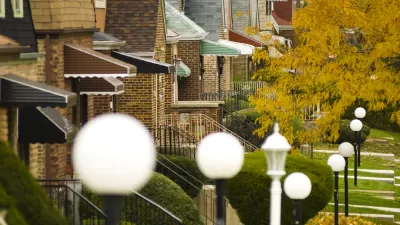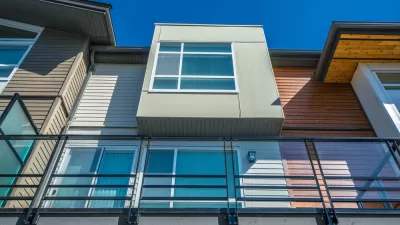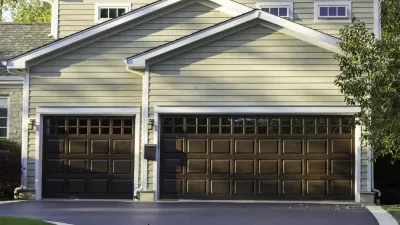While suburbs are changing, that doesn't mean they are declining, according to recently published research.

Whitney Airgood-Obrycki writes that "recent patterns of increasing poverty, greater racial diversity, widespread foreclosures, and fiscal distress" is changing the 20th century narrative about U.S. suburbs. Gone are the days of idyllic WASP homes.
But does that mean that suburbs are in decline? Airgood-Obrycki thinks narratives of decline are overstated—laying out that case in a new paper, "Suburban Status and Neighborhood Change," published online by the Urban Studies journal.
Airgood-Obrycki "examined status changes from 1970 to 2010 for city and suburban neighborhoods in the nation’s 100 most populous metros," using Census tracts as the unit of measure as a proxy for neighborhoods.
As for findings, Airgood-Obrycki explains: "While there was some evidence of suburban status decline over the study period, I found that high-status neighborhoods were and continue to be disproportionately located in suburban communities. The share of top quartile neighborhoods located in the suburbs rose from 68 percent in 1970 to 75 percent in 2000 before falling slightly to 74 percent in 2010."
FULL STORY: Are the Suburbs Losing Status?

Planetizen Federal Action Tracker
A weekly monitor of how Trump’s orders and actions are impacting planners and planning in America.

Chicago’s Ghost Rails
Just beneath the surface of the modern city lie the remnants of its expansive early 20th-century streetcar system.

San Antonio and Austin are Fusing Into one Massive Megaregion
The region spanning the two central Texas cities is growing fast, posing challenges for local infrastructure and water supplies.

Since Zion's Shuttles Went Electric “The Smog is Gone”
Visitors to Zion National Park can enjoy the canyon via the nation’s first fully electric park shuttle system.

Trump Distributing DOT Safety Funds at 1/10 Rate of Biden
Funds for Safe Streets and other transportation safety and equity programs are being held up by administrative reviews and conflicts with the Trump administration’s priorities.

German Cities Subsidize Taxis for Women Amid Wave of Violence
Free or low-cost taxi rides can help women navigate cities more safely, but critics say the programs don't address the root causes of violence against women.
Urban Design for Planners 1: Software Tools
This six-course series explores essential urban design concepts using open source software and equips planners with the tools they need to participate fully in the urban design process.
Planning for Universal Design
Learn the tools for implementing Universal Design in planning regulations.
planning NEXT
Appalachian Highlands Housing Partners
Mpact (founded as Rail~Volution)
City of Camden Redevelopment Agency
City of Astoria
City of Portland
City of Laramie





























